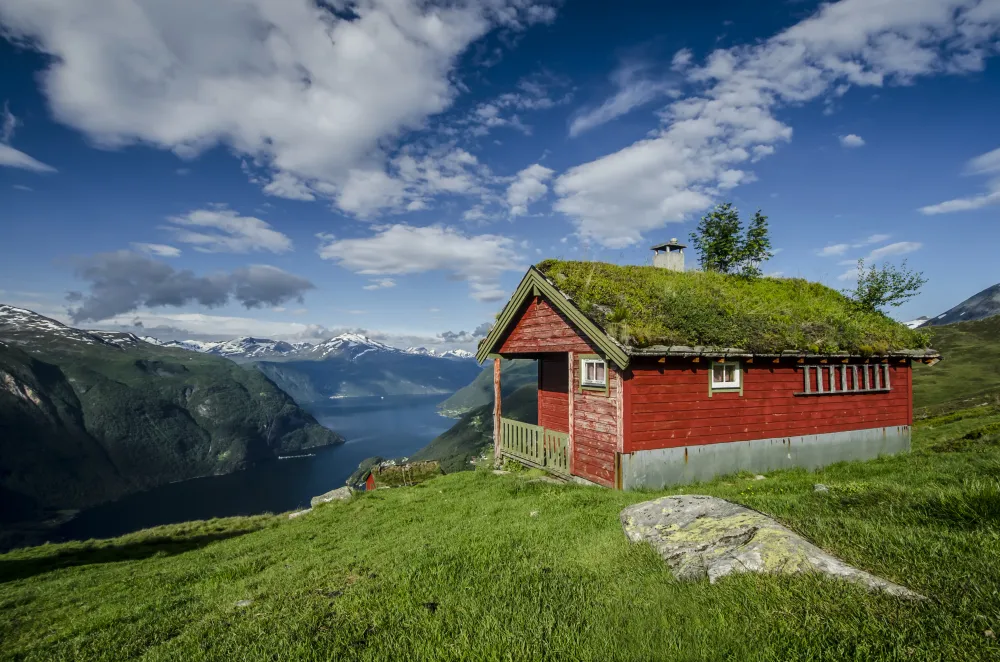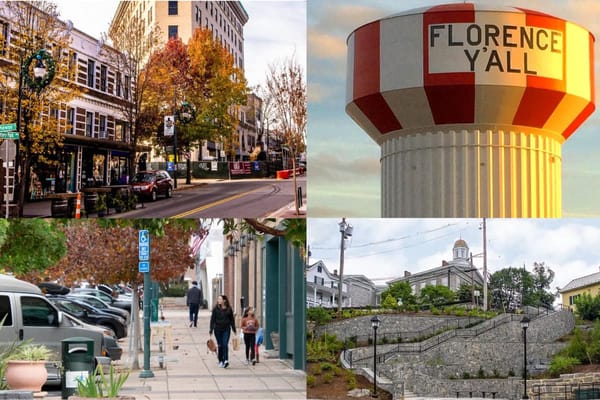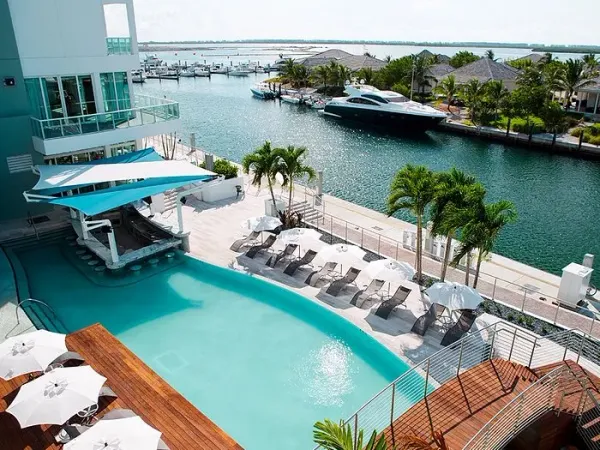Where to Find Perfect Year-Round Weather in the U.S.
Tired of planning your vacations — or your life — around unpredictable weather? You’re not alone. Thousands search every month for answers to one simple question: Where in the US is it 70 degrees year-round? And while no place is truly immune to seasonal shifts, a handful of U.S. destinations come remarkably close.
In this guide, we break down the cities where the forecast is consistently in your favor, so you can enjoy sunshine, mild temperatures, and outdoor living no matter the month.
1. San Diego, California
If you asked a weather algorithm to design the most livable climate on Earth, it might just spit out San Diego.
This is the place that always seems to land on “Best Weather” lists — not because it’s the warmest or sunniest, but because it rarely surprises you. The temperature hovers comfortably between the mid-60s and mid-70s most of the year. Winter? Light sweater. Summer? Open windows.
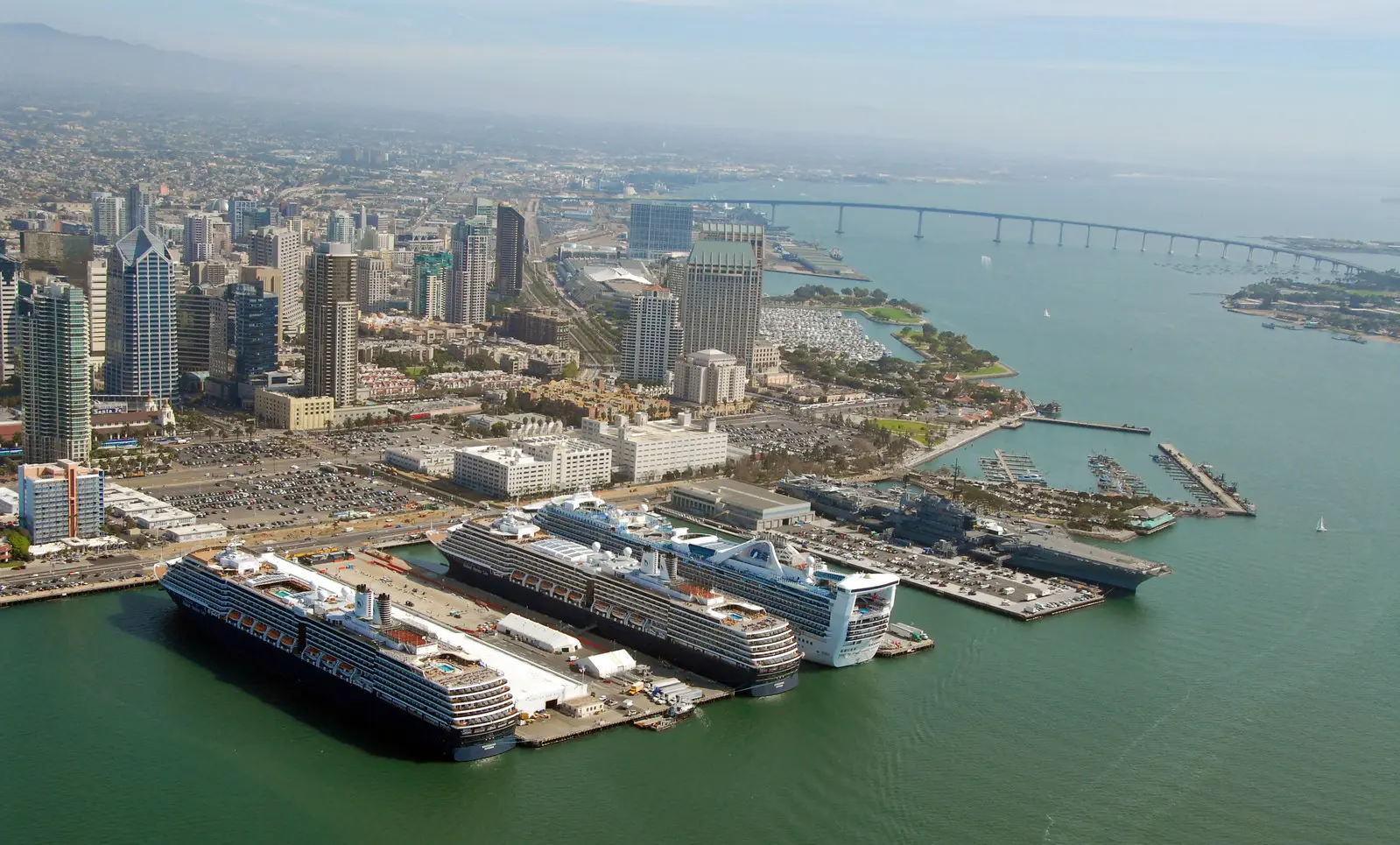
But San Diego’s real weather secret isn’t just the temperature — it’s the rhythm. Mornings often start with a gentle marine layer, that cool, cloudy hush that rolls in from the Pacific and keeps things mild. By late morning, the sky clears, and you’re left with that textbook blue California afternoon.
What makes it even better? The city is made to be lived outdoors. People dine on patios year-round. Farmers' markets don’t close for the season. Neighborhoods like North Park, La Jolla, and Point Loma buzz quietly even in January, with runners, cyclists, dog-walkers, and barefoot surfers who seem to have skipped the concept of seasonal clothing entirely.
The only real drawback? It’s no secret. San Diego’s comfort comes with a price tag — not just in real estate, but in daily costs. But for many, the trade-off is worth it. When you step outside in January and it feels like April, it’s hard to imagine going back to a climate that demands anything more than a light hoodie.
2. Santa Barbara, California
If San Diego is the golden retriever of coastal cities — friendly, active, always ready for a run — Santa Barbara is more like a well-read cat curled up in a sunbeam. It doesn’t try to impress you. It doesn’t have to. It just sits there, beautiful and perfectly temperate, doing its thing.
Tucked between the Pacific Ocean and the Santa Ynez Mountains, Santa Barbara is one of those rare places where the phrase “Mediterranean climate” actually means something. Winters are mild and green. Summers are warm but rarely hot. Humidity stays low, and the average high floats gently between the mid-60s and low 70s for most of the year. And thanks to the unique east-west orientation of its coastline — rare for California — it avoids many of the foggy mornings that coastal cities further north deal with.
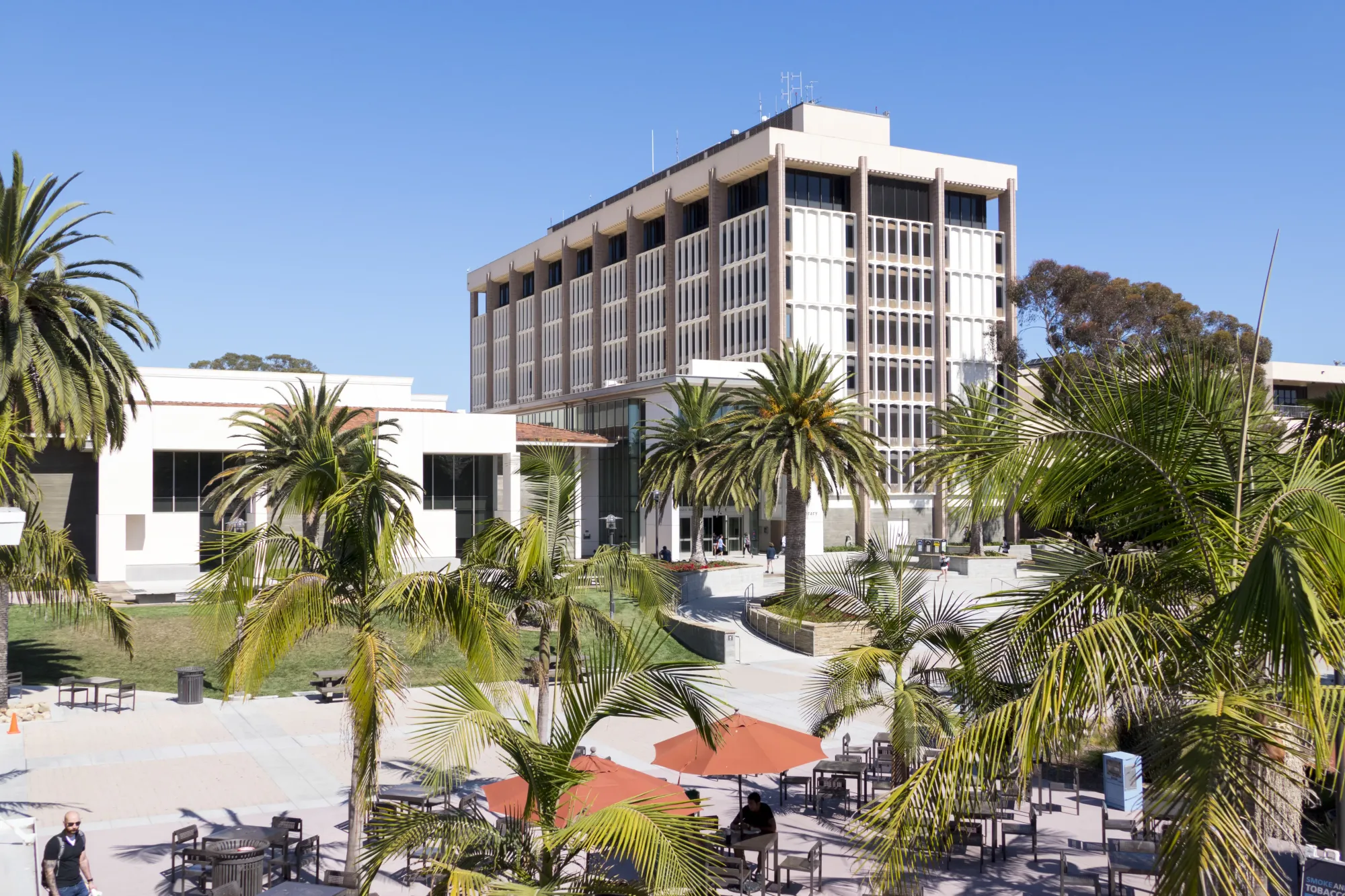
It’s not just the temperature that feels balanced — the entire atmosphere of Santa Barbara moves at a slower, more deliberate pace. People sip coffee on sunny patios in February. Downtown stays vibrant year-round, anchored by Spanish Colonial architecture, independent bookstores, and cafés that seem to exist purely for quiet mornings. Even the palm trees look like they’ve retired early.
And yet, despite its polished surface, Santa Barbara isn’t frozen in some nostalgic postcard. It’s a living, breathing city — just one with remarkably pleasant weather as a constant backdrop.
If perfect weather had a zip code, this would be a contender. Santa Barbara doesn’t just offer year-round comfort — it makes that comfort feel like an art form.
3. Crestline, California
If Southern California had a secret escape hatch, it would be Crestline.
Tucked high in the San Bernardino Mountains, just 80 miles east of Los Angeles, Crestline offers the kind of mild-weather mountain living that feels almost too good to be true. While nearby Big Bear gets blanketed in snow and Lake Arrowhead leans toward luxury, Crestline flies under the radar — quieter, more affordable, and surprisingly temperate for its elevation.
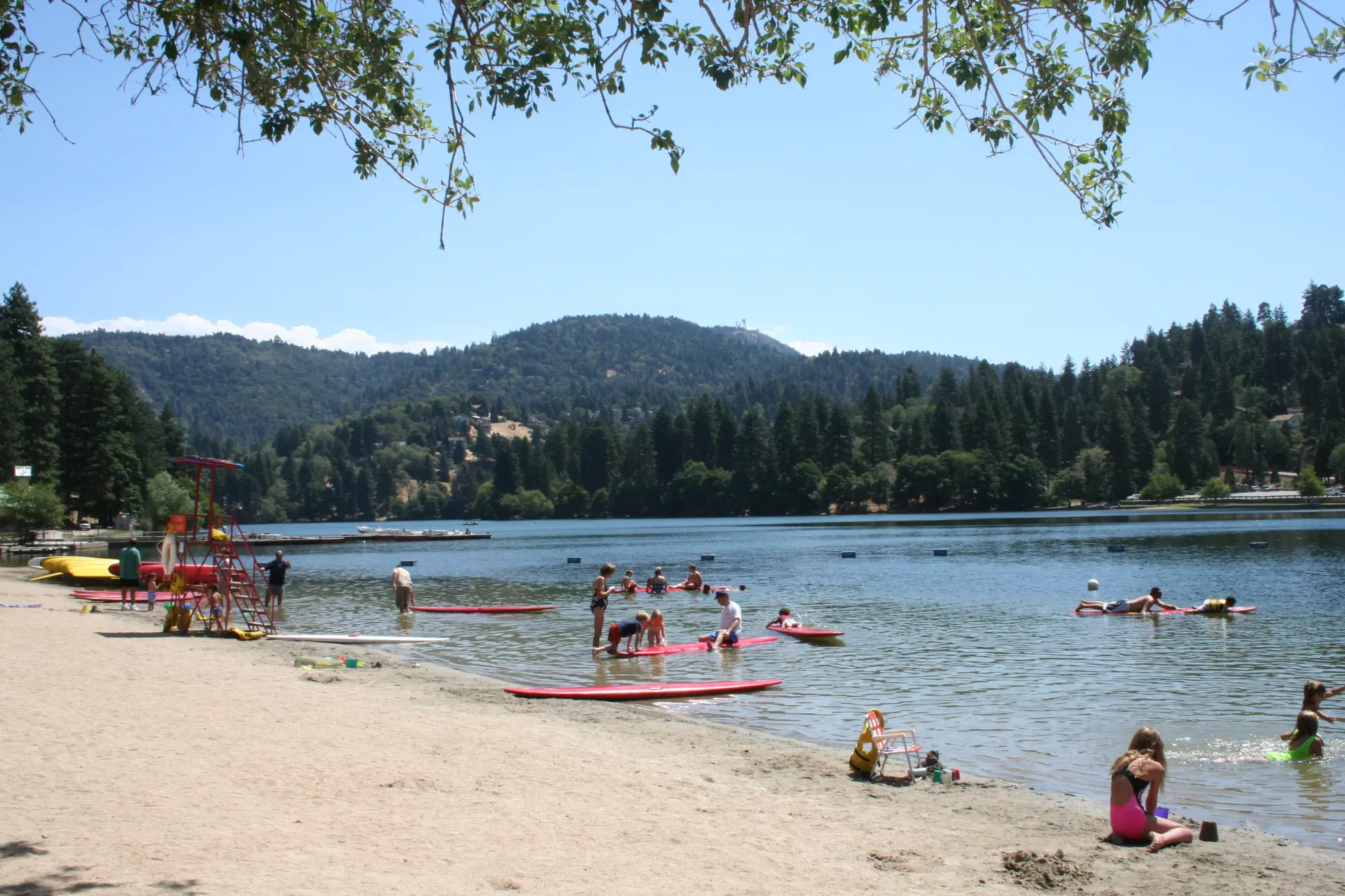
At 4,700 feet above sea level, Crestline doesn’t play by the same seasonal rules as the valleys below. Summers are warm but rarely sweltering, thanks to the altitude. Winter brings the occasional dusting of snow, but not the kind that shuts life down. Most days, the air is crisp, the sky is blue, and the temperature floats somewhere between 60 and 75 degrees — especially from late spring through early fall. It's not technically 70°F year-round, but it dances close enough to feel like nature is trying to meet you halfway.
In a state known for chaos, Crestline is a pocket of calm — a reminder that "perfect" weather isn't always about temperature. Sometimes, it's about how a place makes you feel when you step outside.
4. Hilo, Hawaii
If you're looking for perfect weather in the conventional, sunny-postcard sense, Hilo might not be your first thought. It rains here. A lot. But ask anyone who’s lived on Hawaii’s Big Island for more than a vacation, and they’ll tell you: Hilo isn’t about weather-proof days. It’s about climate peace.
Located on the lush eastern side of the island, Hilo has one of the most stable temperature ranges in the entire United States. It rarely climbs above 85°F or drops below 65°F. Most days settle right around 70 to 75, with a soft breeze and the kind of ambient warmth that wraps around you instead of pressing down on you. There are no snow days, no furnace repairs, no “Do I need a jacket?” debates. It’s just... comfortable. Always.
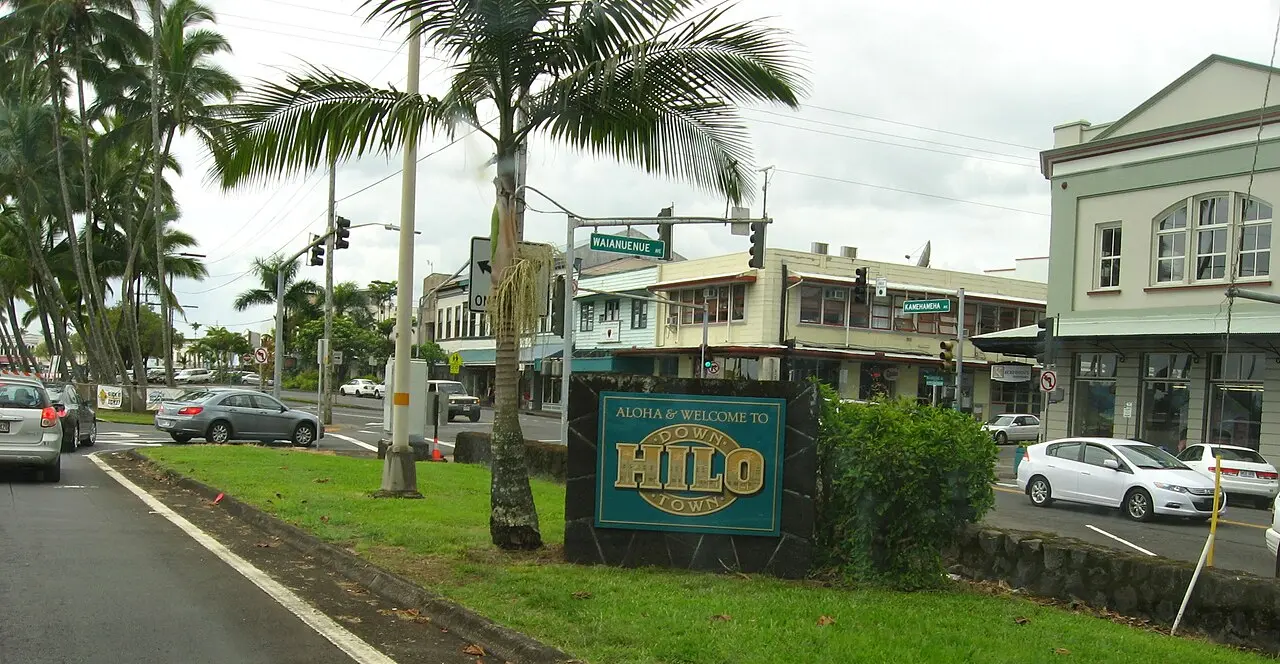
Yes, the rainfall is real. But it rarely arrives with drama. Think light, misty showers that roll through and fade just as fast. And in return, you get jungle-thick greenery, waterfalls around every corner, and backyard fruit trees heavy with papaya, banana, and avocado. It's not the dry, desert kind of perfection. It’s a wetter, wilder kind — and it grows on you.
Hilo’s pace matches its climate: steady, soft-spoken, and slow. There are no high-rises here, no fast fashion chains, no big-city hustle. Just mom-and-pop cafés, open-air farmers markets, and a shoreline that still feels sacred.
Hilo isn’t for everyone. There’s no nightlife to speak of. The Internet can be spotty outside of town. The rain will test your patience. But if you’re someone who wants to fall into a rhythm where every day feels like the same warm, forgiving exhale — this place delivers. No snow. No heatwaves. No drama. Just a subtropical hum that never really changes.
5. Sedona, Arizona
At first glance, Sedona doesn’t belong on a list about 70-degree weather year-round. It sees snow in winter, heat in summer, and definite seasonal shifts. But what Sedona lacks in literal temperature stability, it makes up for in something that’s just as important — comfort through contrast.
Tucked into Arizona’s high desert at 4,300 feet, Sedona has the kind of climate that plays in the middle — warm days, cool nights, and a sky so wide and clear it feels like part of the landscape. Winters bring a light dusting of snow now and then, but daytime temperatures often hover in the 60s and low 70s. Summers, though hot, are dry — and often broken up by afternoon monsoons that bring dramatic skies and welcome relief.
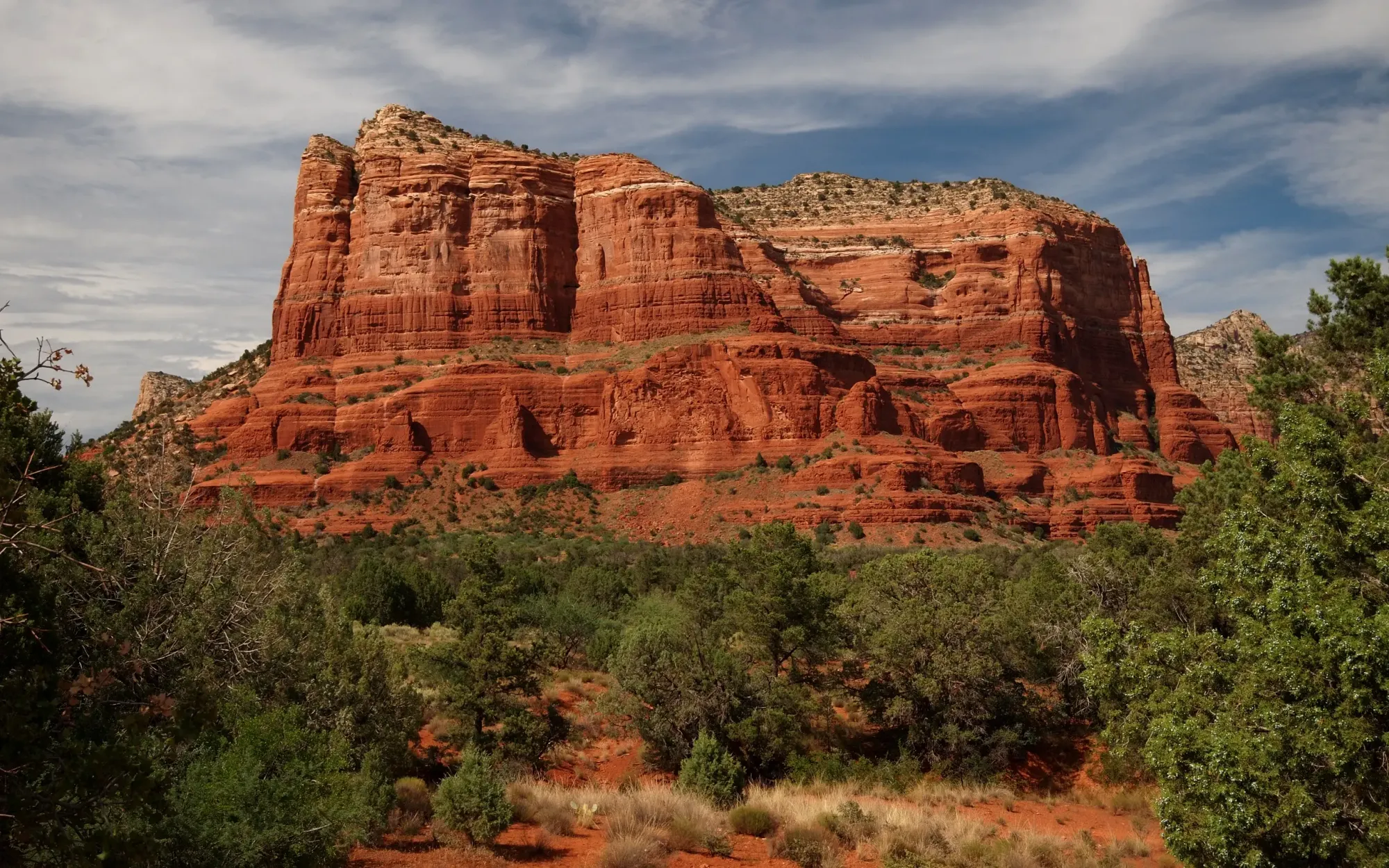
But the real reason Sedona makes this list isn’t just the numbers — it’s the experience. There’s something about this place that draws people in and holds them. Maybe it’s the red rock canyons that catch fire in the afternoon sun. Maybe it’s the scent of juniper and sagebrush in the air. Maybe it’s the silence — thick and grounding — that wraps around you on a hike or even just stepping outside with your morning coffee.
This is a place where people come to realign. Not in a trendy, Instagram-retreat kind of way, but in a personal, private way. Writers, healers, remote workers, early retirees — they all find their way here, drawn by Sedona’s blend of solitude, beauty, and just enough weather to keep life interesting without ever making it difficult.
6. Savannah, Georgia
Savannah is one of the few East Coast cities where winter rarely interrupts your travel plans. Snow is almost nonexistent, and average highs in January sit comfortably in the low-60s Fahrenheit. You’ll get plenty of dry, sunny days in winter and early spring — ideal for walking tours, open-air dining, and exploring the city’s 24 historic squares without bundling up.
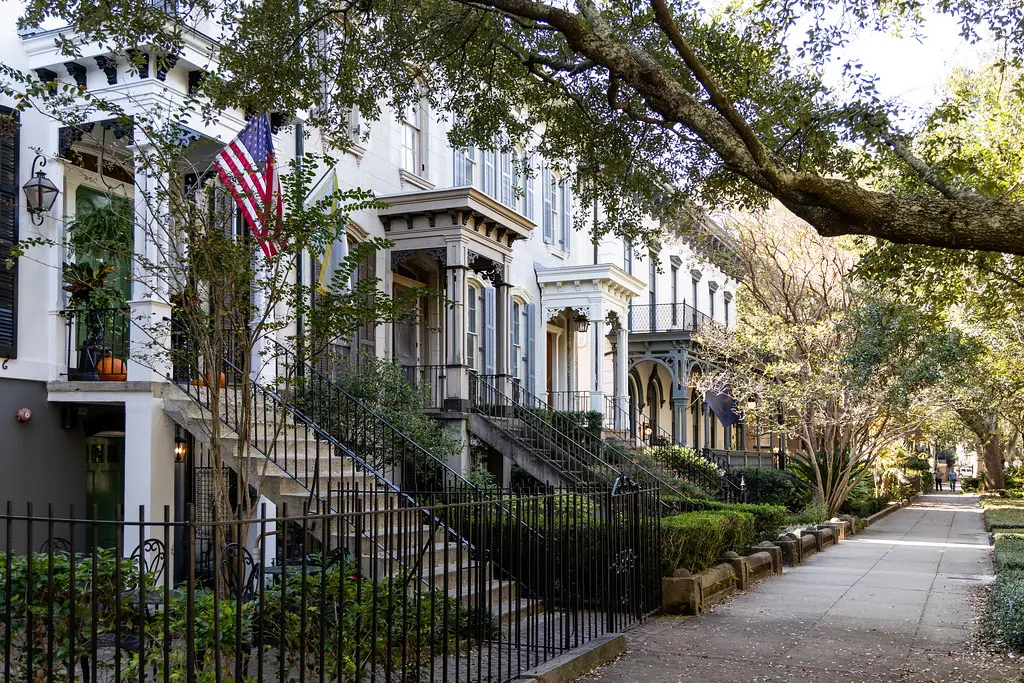
Rainfall is modest, averaging around two days per week throughout the year. Even in wetter months, storms tend to pass quickly, and outdoor plans rarely need to be cancelled. That makes Savannah a reliable year-round destination — especially from November through April.
Summers, however, are a different story. Highs frequently reach into the low 90s Fahrenheit from June through September, and the humidity is intense. The National Oceanic and Atmospheric Administration ranks Savannah as the 30th most humid city in the U.S., which can make midday exploring uncomfortable during peak summer. That said, the city’s proximity to the Atlantic Ocean does offer occasional coastal breezes, especially in the mornings and evenings.
Still, most visitors — and locals — consider fall and winter the sweet spot. These seasons bring dry air, lower temps, and plenty of sunshine. Outdoor events pick up, the city’s parks stay green, and al fresco dining under the oak trees becomes not only possible, but preferable.
With a population of just over 150,000, Savannah stays active year-round, but never overwhelming. It's especially appealing for travelers who want walkable neighborhoods, access to history and culture, and minimal weather-related disruptions. If you’re looking for a Southern city with manageable seasons, mild winters, and just enough heat to remind you you’re in Georgia, Savannah delivers.
7. Charleston, South Carolina
Charleston’s coastal position in South Carolina’s Lowcountry gives it one of the most temperate and consistent climates on the East Coast. Winters are short and mild, with average highs in the upper 50s to low 60s Fahrenheit. Snow is almost nonexistent — so rare, in fact, that local blogs track the handful of events since 1989 like folklore.
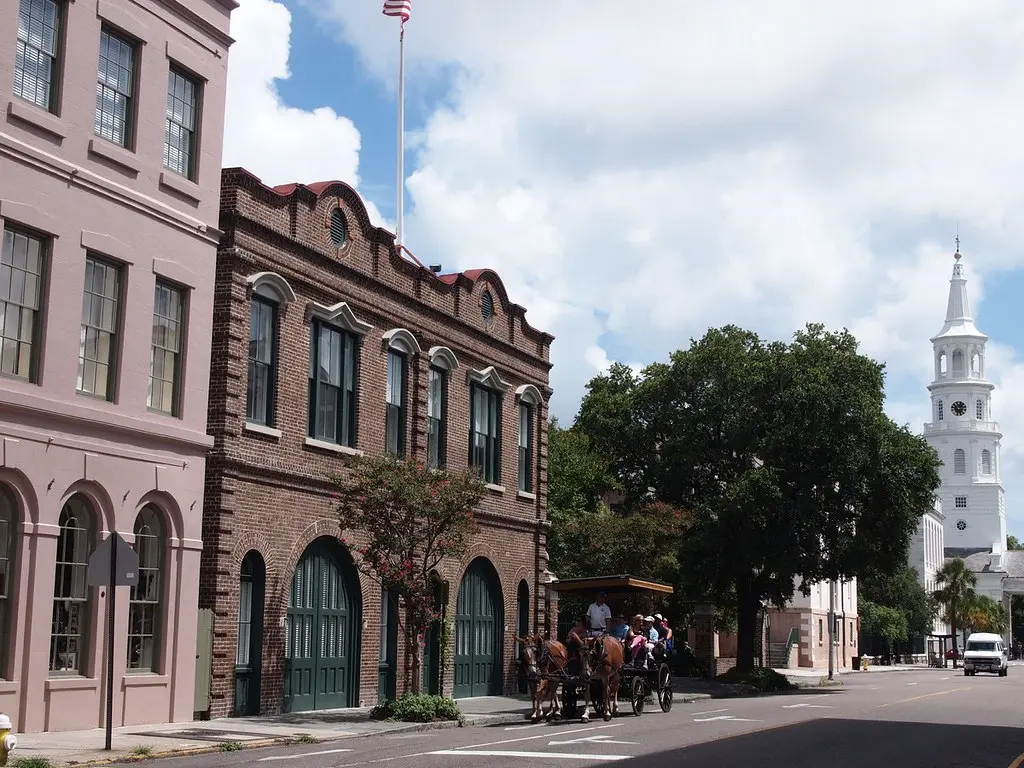
Charleston gets about 230 days of sunshine per year, making it an appealing option for travelers avoiding gloomy, wet destinations. Rain is spread fairly evenly throughout the year, but rarely heavy — typically no more than 8 to 10 days per month. That said, this region isn’t immune to weather extremes. A record-breaking 1,000-year flood hit in 2015, and hurricane season (June through November) brings occasional storm threats. Most years, though, travel isn’t disrupted.
Summer brings heat and humidity, but it’s more tolerable than in inland Southern cities. The Atlantic provides a consistent breeze, and the city’s location on a peninsula helps moderate extreme temperatures. Expect highs in the mid-to-high 80s Fahrenheit from June through September.
Spring and fall are the best times to visit: warm, dry, and perfect for walking the cobblestone streets of the French Quarter, dining outdoors, or visiting nearby beaches. Charleston's weather pairs well with its historic charm — ideal for travelers looking for a mix of culture, architecture, and minimal seasonal hassle.
8. Fort Lauderdale, Florida
Fort Lauderdale ranks among the sunniest cities in the U.S., logging over 3,000 hours of sunshine per year. Located along Florida’s southeastern coast, it offers consistently warm temperatures and ocean breezes that help moderate the tropical heat — especially compared to inland cities.
Average daytime highs sit between 75°F and 90°F year-round. Winters are particularly appealing, with temperatures ranging from the low 60s to upper 70s, low humidity, and minimal rainfall — ideal for beach days, boat tours, and walking Las Olas Boulevard without breaking a sweat.
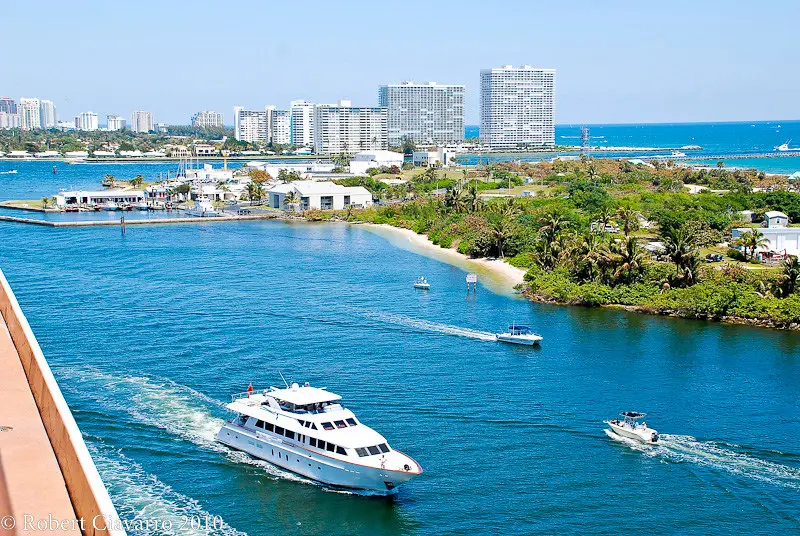
Summers are hot and humid, with highs often in the upper 80s to low 90s and frequent afternoon thunderstorms. However, storms are typically short-lived and predictable, rolling through in late afternoon and clearing up quickly. Travelers should plan outdoor activities earlier in the day during this season.
Snowfall is virtually nonexistent. Even during the unusual January 2025 snowfall that dusted much of northern Florida, Fort Lauderdale remained untouched. In fact, the last recorded snowfall in the city was in 1977.
The city’s location makes it a hub for winter snowbirds — not just for the sunshine, but because Fort Lauderdale is less hurricane-prone than some Gulf Coast cities. Its infrastructure is built around year-round tourism, and most businesses, events, and outdoor attractions operate uninterrupted through all seasons.
For travelers seeking reliable warmth, beach access, and minimal weather surprises, Fort Lauderdale delivers — especially from November through April, when it’s at its absolute best.
9. Denver, Colorado
Denver offers more sunshine than nearly any major U.S. city — around 300 sunny days per year, according to the National Weather Service. That alone makes it a strong year-round travel option, especially for those looking to escape long stretches of overcast skies.
Set at an elevation of 5,280 feet (earning it the nickname "The Mile-High City"), Denver enjoys a semi-arid climate with low humidity, making both warm and cold temperatures feel more tolerable. Summers are warm but manageable, with highs averaging in the mid-80s Fahrenheit. While July is the hottest month, 90-degree days are typically dry and short-lived.
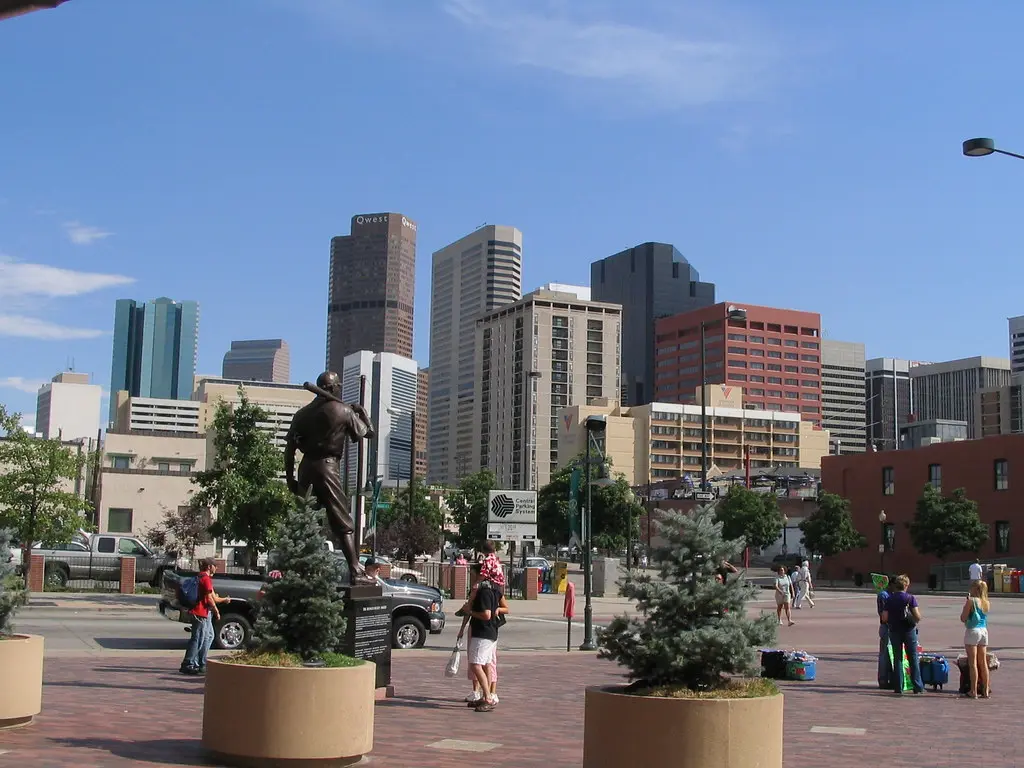
Winters bring snow — but not the kind that shuts the city down. Snowfall is frequent, but it's often followed by clear, sunny days that melt the accumulation quickly. Daytime winter temps average in the low 40s, with nighttime lows occasionally dipping into the teens. Still, it’s rare for Denver to see extended deep freezes. And if you're looking to enjoy winter, you’re just a couple of hours from world-class ski resorts like Breckenridge and Aspen.
Unlike many places with four full seasons, Denver doesn’t come with extreme seasonal fatigue. Spring and fall are transitional but pleasant, with mild temperatures and blooming city parks. Air quality is generally good, thanks to the elevation and wind patterns, making Denver a top choice for travelers with respiratory sensitivities.
10. Los Angeles, California
Los Angeles is one of the most climate-stable major cities in the U.S., with a classic Mediterranean climate defined by dry summers, mild winters, and limited rainfall. Temperatures stay remarkably consistent throughout the year, typically ranging between 50°F and 85°F — ideal for travelers who want sunshine without the unpredictability.
The city averages 284 sunny days per year, and even during the cooler months, daytime highs usually sit in the mid-60s to low 70s. Rain is infrequent and generally confined to the winter months, peaking in January and February, but even then, it’s rarely more than a light inconvenience. Extended cloudy or stormy periods are rare.
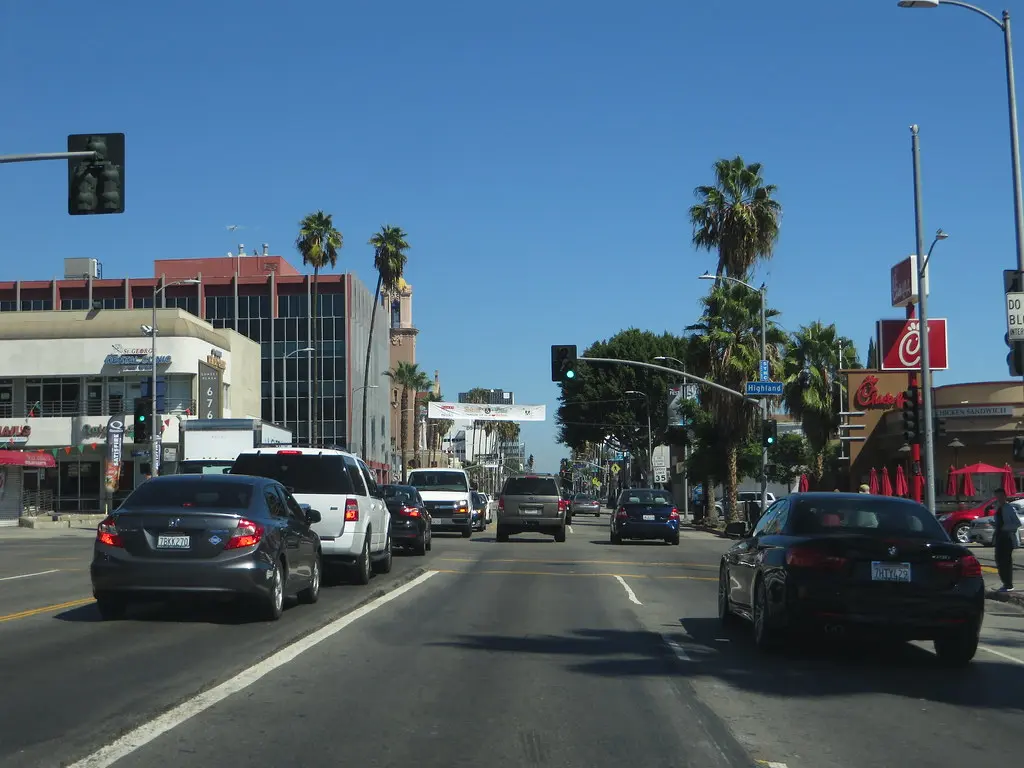
Humidity is low year-round, and ocean breezes help keep the city cooler than other parts of inland Southern California. Summer temperatures in central areas rarely exceed 85°F, while coastal neighborhoods like Santa Monica or Venice stay even cooler, making beach days comfortable even in August.
What sets L.A. apart is year-round usability. You can hike in Griffith Park in December, surf in March, or explore neighborhoods like Silver Lake or Echo Park without ever needing a heavy jacket. It's also an ideal home base for winter travelers looking to avoid snow entirely while still staying active outdoors.
11. Orlando, Florida
Orlando offers year-round warmth and some of the shortest, mildest winters in the continental U.S.. Daytime highs rarely dip below 70°F, even in January, making it one of the most reliable destinations for winter sun without leaving the mainland.
From November through April, the weather is ideal: low humidity, cool mornings, and plenty of sunshine. Rainfall is minimal, skies are generally clear, and outdoor activities — from walking around Lake Eola to theme park visits — are comfortable and crowd-friendly.
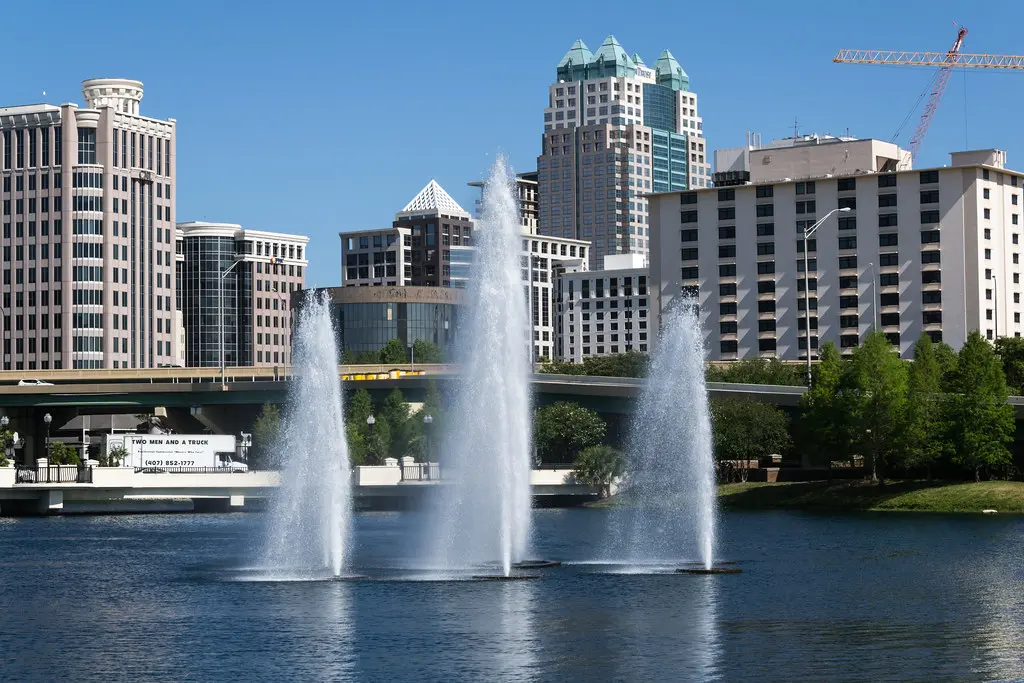
Summers, however, are hot and humid. Highs often push into the 90s Fahrenheit from June through September, and the humidity can be intense. Afternoon thunderstorms are common during this time but are typically short, heavy bursts that clear within an hour. Most locals and seasoned travelers schedule outdoor plans in the morning and take indoor breaks during the hottest part of the day.
Despite being in Florida, Orlando is less vulnerable to hurricanes than coastal cities like Miami or Tampa. Its inland location — about 100 miles from the Gulf Coast — gives it a buffer from the worst of tropical storms.
Snow? Almost unheard of. Orlando hasn’t recorded measurable snowfall since 1977.
For travelers looking to combine sunshine, family-friendly attractions, and minimal seasonal disruption, Orlando is one of the most weather-consistent choices in the U.S., particularly in fall and winter.
Top Cities Comparison
| Category | San Diego, CA | Crestline, CA | Hilo, HI | Fort Lauderdale, FL | Denver, CO |
|---|---|---|---|---|---|
| Best for Winter Sun | Excellent | Good | Excellent | Top Choice | Good (cold but sunny) |
| Low Humidity | Very Low | Low | Very High | High | Very Low |
| Walkability in Mild Weather | High | Moderate | Moderate | Moderate | High |
| Year-Round Climate Consistency | Very Consistent | Fairly Consistent | Very Consistent | Very Consistent | Seasonal Shifts |
| Seasonal Range Without Extremes | Mild Variation | Noticeable Seasons | Minimal Variation | Minimal Variation | Full Seasons |
| Sunshine Hours | ~266 days | ~280 days | ~278 days | ~3,000 hours | ~300 sunny days |
| Shoulder Season for Families | Spring & Fall | Spring & Fall | Winter | Winter & Spring | Spring & Fall |
| Least Rainy | Low | Moderate | High (light rain often) | Moderate (afternoon storms) | Very Low |
| Urban + Outdoor Balance | High | High (mountain + lake) | Moderate (nature-focused) | Moderate | Excellent (city + mountains) |
| Remote Worker Climate | Top Choice | Great for Quiet Retreats | Best for Slow Travel | Excellent (snowbird hotspot) | Top for Active Nomads |
Conclusion
No single place in the United States enjoys flawless weather every day of the year, but certain regions come remarkably close. Coastal California cities like San Diego and Santa Barbara balance sunshine with mild ocean breezes, while Honolulu in Hawaii pairs tropical warmth with consistent trade winds. In the Southeast, destinations such as Savannah and Charleston offer a gentler four-season rhythm with long stretches of pleasant weather, while mountain-edge towns like Asheville temper their summers with elevation. Even desert favorites like Phoenix and Palm Springs, though hot in midsummer, provide clear skies and warm winters unmatched elsewhere in the country.
What these cities share is balance: limited extremes, abundant sunshine, and climates that invite year-round outdoor living. The “perfect” U.S. weather depends on your definition — endless summer warmth, four seasons without harsh winters, or a stable mix of sunshine and cool nights. For travelers and residents alike, choosing a destination with consistently enjoyable weather can turn everyday routines or long-awaited vacations into something special. While perfection may be elusive, these standout U.S. cities prove that near-perfect weather is very much within reach.
With year-round rentals available on Karta.com, you can test the feeling without the full leap — book a month, stay a season, or just see what it’s like to wake up every day not thinking about the weather.
FAQ
1. Is there really a U.S. city with perfect weather year-round?
Not exactly — no place avoids all seasonal shifts. However, cities like San Diego, Honolulu, and Santa Barbara are widely regarded as having near-perfect climates with mild temperatures and plenty of sunshine almost all year.
2. What city in the U.S. has the mildest winters and summers?
San Diego, California, is often cited as the most balanced: average winter highs hover around 65°F (18°C), and summers rarely exceed 80°F (27°C), thanks to Pacific breezes.
3. Which U.S. destinations have the most sunny days?
Phoenix, Arizona, and Las Vegas, Nevada, top the charts with over 300 days of sunshine annually. While very sunny, they also face extreme summer heat, so they’re not “perfect” year-round for everyone.
4. Where in the U.S. can you avoid both snow and hurricanes?
Southern California (e.g., Los Angeles, San Diego) and much of coastal Hawaii generally avoid both. These areas combine stable weather with minimal exposure to major storms.
5. Is Hawaii’s weather really perfect all year?
Hawaii’s climate is remarkably consistent: highs average 78–85°F (25–29°C) year-round. Rain tends to fall in short bursts, and trade winds keep the islands comfortable.
6. Which U.S. city is best for outdoor living year-round?
Honolulu and San Diego are top choices: both cities allow for hiking, beachgoing, and outdoor dining nearly every day of the year without extreme seasonal disruptions.


